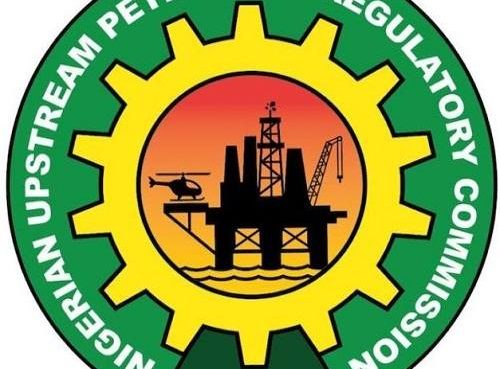If Nigeria’s refineries were a private project, a fresh profitability analysis would certainly be required before an additional naira is released for the rehabilitation. That will require a detailed analysis of the expected cash flow and funding options. But the analysis would not stop at that.
The refineries have a rich history of contentious capital expenditures that would interest any individual who wishes to make a sound final investment decision (FID). Such a decision cannot be made without an extensive profile of their previous investment outlays and the entrenched culture of net losses, which have run into billions of
According to available records, about $25 billion has been spent on the turn-around maintenance (TAM) of the refineries so far. Successive administrations have had their fair share of the blame on how the four refineries transformed from national assets to a drain on the lean public resources.
TAM, which many have described as a source of slush funds for the political class over the years, started in the regime of Gen. Ibrahim Babangida (rtd) when it was supposed to be carried every two years. Despite the huge amount sunk into the assets, output nosedived from about 90 per cent to 60 per cent.
Late Gen. Sani Abacha had a more grandiose idea on how to make the refinery produce at an optimal level, having inherited what the government described as rotten edifices. A contract worth was issued to overhaul the facilities to global standards. Between 1994 and 1998, about $216 million was reportedly spent but only to drop the capacity utilisation from the 60 per cent the late dictator met to per cent.
Equipment worth hundreds of millions of naira brought in for the maintenance supervised by the Nigerian National Petroleum Corporation (NNPC) were left to rot in different locations while the refineries gradually became cesspits of official graft at a time the railway, road, port, communication, and several other infrastructures in different parts of the country were equally left to deteriorate.
A report said the administration of Gen. Abdusalami Abubakar (rtd), in an effort to make the refineries work, spent about $92 million within the short period he was in the saddle. Yet, the capacity utilisation dwindled embarrassingly while billions of naira were frittered away yearly on petroleum product importation.
TAM and its associated rot continued into the democratic dispensation. A report quoted a former GMD of the NNPC, Funsho Kupolokun, as saying that over $1 billion was committed to regular repairs that failed to yield the desired results between 1999 and 2007 when President Olusegun Obasanjo left office.
Obasanjo, in the twilight of his administration, eventually realised the foolery of TAM that only succeeded in turning around the pockets of a few government individuals, their cronies in the private sector who were handed the slush contract. He heeded counsel and sold the refineries to a consortium known as Blue Circle, which was led by Aliko Dangote and Femi Otedola.
That transaction was sealed by a lame-duck President Obasanjo while he was preparing his handover notes. But the administration of late Umoru Musa Yar’dua, which desperately needed quick points to gain public credibility, coming from an election the President himself confessed was flawed reversed the deal and continued what has become synonymous with national plunder.
By the time President Goodluck Jonathan took over leadership, refining capacity came to near zero. But the scam called TAM continued to serve its purpose, serving as a source of ready access to public funds. The current administration, whose head had served as a minister of petroleum when TAM was still at its teething stage, is not spared of the rip-off. To camp its excesses, it wants to spend $1.5 billion on just one of the four refineries while it plans to extend the rehabilitation to Warri and Kaduna subsequently.
Perhaps, no report is more revealing of rot in the refineries than the first audit statements published by the NNPC last year. According to the report, the four refineries gulped N1.64 trillion in cumulative losses recorded in their operations since 2014. Their operational costs kept rising while they produced nothing.
This tale makes a good background for a financial advisor supposing the $1.5 billion is a private investment fund. Yet, public projects globally have a semblance of profitability analysis. It is called cost-and-benefit analysis. And experts said the new refinery rehabilitation will fail if subjected to simple cost-and-benefit analysis.
For an economy that is battling with a cash flow crunch and rising imbalances that are pushing the economy to a fiscal cliff, there is no doubt that other issues are more pressing in the scale of preference than fixing an old refinery whose performance nobody would want to put a bet on, advocacy groups have suggested.
A financial analyst and partner at PwC Nigeria, Taiwo Oyedele, says it is important the government focuses on addressing “basic issues” to curb the rising poverty. He lists insecurity, food shortage, and homelessness as the fundamental issues the government should rather channel its meager resources to make the “biggest impact”.
What can we do to address road infrastructure so that 60 per cent of food products will not spoil before it gets to the market? How can we think differently about education and vocational skills? What should we do in the area of research? There are lots of basic needs we should be thinking about how to meet. If I have $1.5 billion, I will channel it to these areas,” Oyedele insists.
Poor social insecurity is often blamed for the rising insecurity. Sadly, the government has reneged in social investment while giving pittances under the guise of fighting poverty. While social investment is almost non-existence, the government is pulling the plug on energy subsidies, which economists say will push up the cost of living and worsen the misery index.
Shelter is seen as a social issue, and unfortunately, the World Bank estimates Nigeria’s housing shortfall at 17 million units. The deficit increases at 20 per cent yearly while the country needs to build 700,000 units on an annual basis to keep pace with the rising population and urban migration. In 2019, the Federal Ministry of Works and Housing embarked on a project to build 2,383 units of housing in the 36 states and the Federal Capital Territory (FCT). While the figure is a far cry of the current need, the affordability issue also denies many households from accessing the few available ones.
Also, food inflation is currently at an over 10-year high, sitting over 20 per cent. Experts say massive investment in the value chain, including processing, will go a long to preserve the food produced just as a robust social intervention to combat insecurity in the north is necessary to take farmers back to the farms. Across the country, the fear of hostage-taking and attack spread like wildfire, crippling economic activities. At its last survey, the National Bureau of Statistics (NBS) estimates the country’s unemployment rate at 33.3 per cent. Youth unemployment is even much higher at 42.5 per cent.
Banditry and general hostility are an increasing function of unemployment and food insecurity. But the sad reality is that the more people draw the attention of the government to the relationship between these challenges and the remoteness of the dreamed Nigeria, the more they become obstinate. Hence, the continued chase of white elephant projects like the just-announced Port Harcourt Refinery rehabilitation.
But there is something more curious. Dangote Refinery, which is guaranteed by the Federal Government, is expected to start production next year. The government has boasted that the project would address the challenge of petroleum product importation and its associated subsidy woes. PwC’s Oyedele says the Dangote project offers more realistic hope to the country’s aspiration for local refining than the failed national refineries.
Besides, energy transition is no longer the fanciful dream it used to be. Countries around the world are setting tough targets to transition from fossil fuel. Though experts, including Adeola Adenikinju, a professor at the University of Ibadan/member of the Monetary Policy Committee (MPC), says there is still a long way to go to achieve the full transition, investors are becoming extremely wary of long-term energy investment view.
Nigeria as well has given a positive response to the electric vehicle fad, saying 30 per cent of transport vehicles will be electric by 2025. This leaves questions on why it now wants to invest N1.5 billion in a moribund refinery with a long-term return consideration.
In recent history, the NNPC and its supervisory Ministry of Petroleum Resources drew support for modular refineries, arguing that they offer the country a better alternative to achieving self-sufficiency in refined products. A few years on, the discussion seems to have been jettisoned for a new plan without a sufficient explanation.
NNPC GMD, Mele Kyari, is confident that the refinery will return to 90 per cent production in five years as the loan will put pressure on the refinery managers to perform. What Kyari GMD did not explain was why the previous TAM exercises, some of which were executed with borrowed funds, did not translate to performance.
Source: guardian










